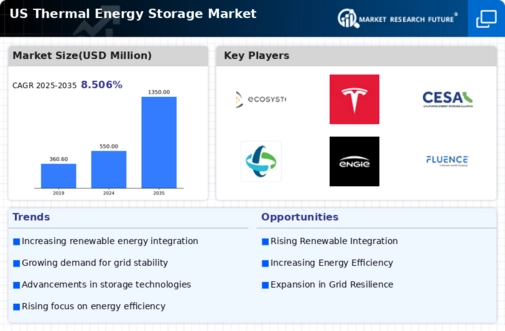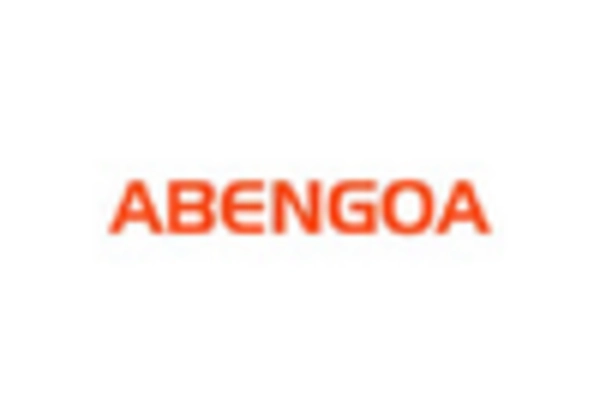Rising Energy Demand
The thermal energy-storage market is experiencing growth due to the increasing demand for energy across various sectors in the US. As urbanization and industrial activities expand, the need for efficient energy solutions becomes paramount. The US Energy Information Administration (EIA) projects that energy consumption will rise by approximately 10% by 2030. This surge in demand necessitates innovative storage solutions to balance supply and demand effectively. Thermal energy storage systems can provide a reliable means to store excess energy generated during off-peak hours, thus ensuring a stable energy supply during peak demand periods. Consequently, this driver is likely to enhance the adoption of thermal energy-storage technologies, positioning them as a critical component in the evolving energy landscape.
Increased Focus on Energy Efficiency
The thermal energy-storage market is increasingly influenced by the growing emphasis on energy efficiency in the US. With rising energy costs and environmental concerns, both consumers and businesses are seeking ways to optimize energy use. The US Department of Energy (DOE) has initiated various programs aimed at promoting energy-efficient technologies, which include thermal energy storage systems. These systems can significantly reduce energy waste by storing excess energy for later use, thereby enhancing overall efficiency. As energy efficiency becomes a priority for regulatory bodies and consumers alike, the thermal energy-storage market will see heightened interest and investment, further solidifying its role in the energy sector.
Cost-Effectiveness of Storage Solutions
The thermal energy-storage market is benefiting from the decreasing costs associated with energy storage technologies. Recent analyses indicate that the cost of thermal energy storage systems has declined by nearly 30% over the past five years, making them more accessible to a broader range of consumers and businesses. This trend is particularly relevant in the context of rising energy prices, where efficient storage solutions can mitigate costs. By enabling users to store energy during low-cost periods and utilize it during high-cost periods, thermal energy storage systems present a financially viable option. As the market continues to evolve, the cost-effectiveness of these systems is expected to drive further investment and adoption within the thermal energy-storage market.
Environmental Sustainability Initiatives
the thermal energy-storage market is impacted by the growing emphasis on environmental sustainability in the US. As climate change concerns escalate, there is a strong push for cleaner energy solutions. The thermal energy-storage market offers a pathway to reduce greenhouse gas emissions by enabling the use of renewable energy sources more effectively. By storing energy generated from solar or wind sources, these systems can help decrease reliance on fossil fuels. The US government has set ambitious targets to reduce carbon emissions by 50% by 2030, which aligns with the objectives of the thermal energy-storage market. This alignment suggests that as sustainability initiatives gain momentum, the market for thermal energy storage is likely to expand, driven by both regulatory support and consumer demand.
Integration with Smart Grid Technologies
the thermal energy-storage market is poised for growth by integrating with smart grid technologies. The advent of smart grids facilitates real-time monitoring and management of energy resources, allowing for more efficient energy distribution. By incorporating thermal energy storage systems, utilities can better manage peak loads and enhance grid stability. The US government has been actively promoting smart grid initiatives, which are expected to reach an investment of over $100 billion by 2030. This integration not only optimizes energy use but also supports the transition to a more resilient energy infrastructure. As smart grid technologies continue to evolve, the thermal energy-storage market is likely to benefit from increased collaboration and investment.

















Leave a Comment